Most used orthopedic instrument and equipment
What does orthopedics treatment read: Stress Fractures, sciatica, surgery, spine surgery, Hip replacement surgery, Vertebral column, Muscle tear, Knee wear, Dysmetria, Arthroscopic surgery, Headache, Back pain, shoulder pain, Neck pain, Hand pain, Elbow pain, Knee Pain, Ultrasound, Degenerative disease, Extremities, Hernia disc, Disc injury, Shoulder tendon injury, Frozen shoulder, Ankle injury, Rotator cuff injury, Achilles tendon injury, Shoulder tendon injury, Injuries, Ligaments, Spinal cord, Knee injuries, Sciatic nerve, Shockwaves, Flat feet, Physical Rehabilitation, Soft tissues, Parkinson, Stem cells, Tendons, Cell therapy, Chronic pain Etc.
The most essential components of orthopedic treatment are discussed below and for details on Bone Holding Forceps click here.
Best orthopedic bone drill machine
A drill stand is a stabilizing tool designed to hold an electric rotary device in position. Bits are loaded into holders and locked in the desired position for use. The hand words or swivel wheels of a drill stand allow the user to manually lower the stabilized swivel drill bit down to the material surface. The bit is pulled straight out of the new hole once the surface has been drilled. Drilling a series of even, perpendicular holes is much easier with a drill stand that holds the bit in place.
How does drill work
All drill presses have the same basic parts. They consist of a head and a motor mounted on a column. The column has a table that can be adjusted up and down. Most of them can also be tilted to drill holes at an angle. On the head, there is the on/off switch and the spindle with the drill chuck. It is raised and lowered by turning a group of stoneware cranks located on the side. Typically, the chuck has about two inches of travel up and down. In other words, a hole three inches deep can be drilled without adjusting the height of the table.
*The material is placed on the table and adjusted by hand or with clamps. The table is then raised to the bit, which is inserted into the chuck. The speed of the bit is usually controlled by a series of stepped belts on the head. Some drills use variable speed motors. There are many speed charts available online to help you determine the speed you need for the material and size of drill you are using.
*When you’re ready to drill, turn it on and slowly pull one of the handles forward and down to drive the bit into the material. The amount of pressure you use will depend on the material you are drilling. Steel needs more pressure than wood, for example. When drilling metal, a sign that you’re using the right amount of pressure is when the chips come out in a long spiral. Drilling metal is a process in itself. With a sharp drill bit, chips – not dust – should come out of the hole as you drill.
( 02 ) Orthopedic bone screw plate all instrument set,



Different drilling machine
Veterinarians’ drill machine: First of all, the drill cover hex is not like any other orthopedic drilling machine. It is a power tool combined with a cover that gives veterinarians the power and confidence to perform sterile surgeries with ease. The surgical drill carefully selected the speed, torque converter, and bone factors engineering of ordinary.
The Drill gives you peace of mind knowing you have the power of a stationary surgical drill you’re familiar with, with the ability to travel with this amazing tool at your fingertips. The DrillCover family of systems is listed as a Class I device, No matter where you are needed for your orthopedic skills, you have sheer power and sterility on your side with the DrillCover Hex.
Benefit: when you purchase this product, you become part of the incredible Drill Cover technology.
When the reusable liquid- and pathogen-proof cloth cover is paired with a robust and powerful hardware tool, you have everything you need to deliver excellent orthopedic care.
03. Finger Contractures
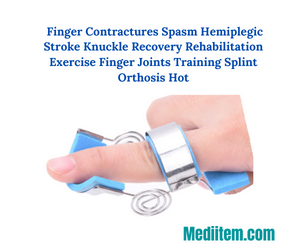
04. Bohler Stirrups-

5.1- kirschner wire bender-

5.2 = kirschner wire punch-

6.1= Suture Wire Cutting Scissors-

6.2- Suture wire cutting scissor angled-

7.1-Best Swedish Pattern Plaster Shears-

7.2 = Bohler’s plaster shears-
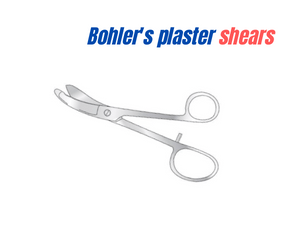
7.3= Guy’s Plaster-

7.4 = Collin rib-

7.5 = Eccentric plaster shear

8.1= Most used orthopedic instrument tufnol handle capener chisel straight-

8.2 = Chisel box tufnol
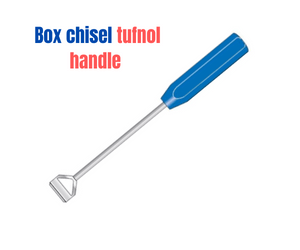
8.3 = Swedish pattern-

9 = Orthopedic volkmann bone scoop-
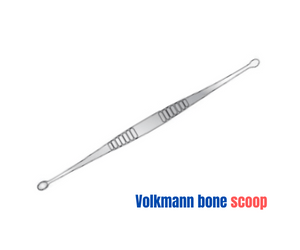
10 = Clamp-

11. Orthopedic stainless steel ruler-

12. Orthopedic stainless steel bruns bone curette-

13.1 = Orthopedic hand drill-

13.2 = Drill guide-

13.3 = Neutral-

14.1 = Farabeuf rugine curved end-
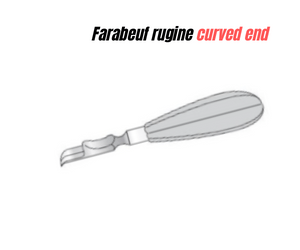
14.2 = Robert jones Rugine convex shaped-

14.3 = Mitchell rugine-

15.1 = Straight Langenbeck Elevator-
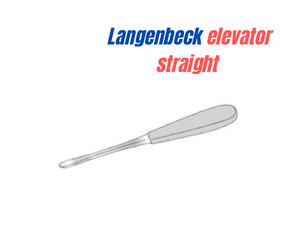
16.1 = Miller bone file-

17 = Orthopedic pliers-

18 = Screw depth gauge-

19 = Pin chuck-

20 = Best orthopedic Langenbeck Bone Hook
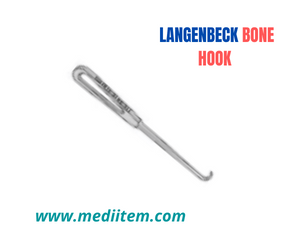
21 = The Most Popular Nail Introducer
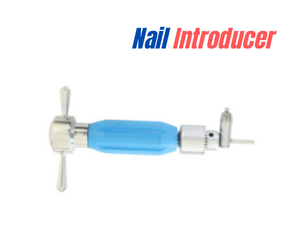
22 = Most used orthopedic instrument mallet-

What is orthopedics
Its principles have been developed and used since primitive times. The creation of the term orthopedics is attributed to the French doctor Nicholas Andry de Boisregard in 1741. This word comes from the Greek words “orthos” (right or upright) and “paideía” (education or training).
Following these words, orthopedics is defined as the medical specialty dedicated to correcting or preventing deformities and traumas of the musculoskeletal system through surgery (orthopedic surgery) or orthoses (braces).
Currently, orthopedic surgery is a rapidly developing field that has benefited from the work of surgeons and researchers and is responsible for the management of both chronic and acute diseases (traumatology) at any time of life.
What are orthopedic prosthetics?
It is an artificial replacement that completely or partially replaces an amputated limb. There are leg, hip, hand, foot, and elbow prostheses, and these perform a large number of essential functions, such as restoring a large part of mobility, carrying out daily activities without the help of third parties, and a noticeable improvement in balance and posture in general.
Likewise, orthopedic prostheses avoid deficiencies caused by the absence of the amputated limb. certain factors should be considered when choosing a prosthesis:
*Lifestyle
*Level of amputation
*Weight, age, and height of the patient
*Area where the amputation was performed Given the complexity of the correct use of a prosthesis that a person requires, the work of a team made up of orthopedic doctors, traumatologists, physical therapists and other professionals who must be incorporated according to the particular needs of the patient is necessary.
There are two types of prostheses:
Endoprosthesis: Those that require surgery to be applied.
Exoprosthesis: They are orthopedic devices that can be removed at the will of the patient. They are classified as follows: Motor: To perform basic functions.
Sensory: In a few words, it refers to mechanized prostheses that interact with the environment. For prostheses, there are different types of materials such as *Aluminum sheets *Plastic *Metal
*Resin. Design is also a very important point for orthopedics and prosthetics since the patient’s quality of life depends on it. An orthopedic prosthesis consists of different components that can vary depending on the characteristics of the user, for example, there is the design of the plug cone, socket, or socket, the design of the suspension, prosthetic foot, and prosthetic knee.
More information- before choosing the material and design of an orthopedic prosthesis, it is necessary to make a preliminary diagnosis that allows you to assess your needs and thus be able to determine the appropriate prosthetic tool.
Remember that an orthopedic prosthesis is a tool, but it is up to you to use it properly.
What is an orthopedic surgeon?
Orthopedic surgeons are specially trained to cure diseases associated with the skeletal system and to repair it surgically when necessary. Orthopedic surgeons treat a wide variety of diseases, such as arthritis, sports injuries, deformities of the axes of the extremities or of the spine, knee pain, back pain, hand pain, foot pain, and, in general, all disorders related to the musculoskeletal system ( ligaments, muscles, tendons, nerves, bones, joints, etc).
Examples of orthopedic surgery
Surgical procedures used by orthopedic surgeons include:
joint replacement. the repair of damaged nerves or the release of compressed nerves, ligament reconstruction, cartilage repair, bone fixation. Many of these techniques have reached great degrees of specialization; such as browser-assisted knee prostheses, browser-assisted osteotomies, arthroscopic meniscus transplantation, or extensor apparatus transplantation for reconstruction of a failed knee prosthesis.
knee surgery: it injures (also osteoarthritis ), meniscus, or ligaments in this area. knee reconstructions after the failure of several prostheses, in which both the bone (massive bone loss) and the extensor apparatus must be reconstructed, the anterior cruciate and subsequent cruciate ligature. Correction by means of osteotomies of alterations in the alignment of the lower extremities. *arthroscopy. *meniscectomy. *Cartilage and meniscus transplant. *Articular cartilage restoration techniques.
*Navigator-assisted primary prosthesis. *Replacement of loose or poorly positioned prosthesis. *Unicompartmental prosthesis.
Hip surgery: Hip reconstructions in which several prostheses have failed and the acetabulum and femur must be reconstructed with a bone contribution. *hip arthroscopy *Femoro-acetabular impingement *Replacement of loose or poorly positioned prosthesis *hip replacement.
Shoulder surgery:- *Instabilities, SLAP, and cuff tears *primary prosthesis *arthroscopy *prosthesis replacement.
Foot surgery: *heel pain *Hindfoot surgery *plantar fasciitis *percutaneous surgery *open surgery *Hallux valgus forefoot Surgery.
Column surgery: *Lumbar spine *arthrodesis *discectomy *minimally invasive surgery
Nerve surgery: *Sequelae of post fractures *Peripheral nerve entrapment syndromes *Fractures.
Hand injuries:- such as carpal tunnel injuries, rhizarthrosis (thumb osteoarthritis), stenosing tenosynovitis (snapping fingers), De Quervain syndrome or scaphoid rupture, any type of traumatic injury, etc. Ortho prosthetic products have been incorporated into the catalog of products offered by Social Security.
This Ministerial Order provides equitable prosthetics and orthotics by establishing a common catalog that ends the inequalities generated by the various catalogs of the autonomous communities. In addition to this expansion of the catalog, the financing amounts are adapted to the reality of the market, and the possibility is contemplated that the amounts of the products should not be advanced in cases of people with few resources or high-cost products, therefore that we could say that orthopedics is covered by public health in certain cases and with a copay.
On the other hand, orthopedics can be presented as an extra service or additional coverage in private medical insurance, almost always with discounts and special prices.
Summary
Orthopedic surgery is a field of surgery whose objective is to resolve disorders of the musculoskeletal system, treating problems that may affect bones, joints, muscles, and cartilage. Among the pathologies in which it is used are the following:
Foot injuries: hallux valgus of the big toe, pes cavus, flat feet, hammer toes, metatarsalgia.
Sources: Via google books and Wikipedia.


